Crocodile Seeds & Silphium
In the pairing of Kyriaki Goni and Lucy Davis there is a shared interest in agro-speculation through histories of seeds, migrations and exploitation. Kyriaki charts the first extinction of an uncultivable plant through over consumption in Europe, and Lucy stories seeds found in the belly of a taxidermy crocodile, dead for 140 years, currently displayed in the Lee Kong Chian Singapore Natural History Museum.
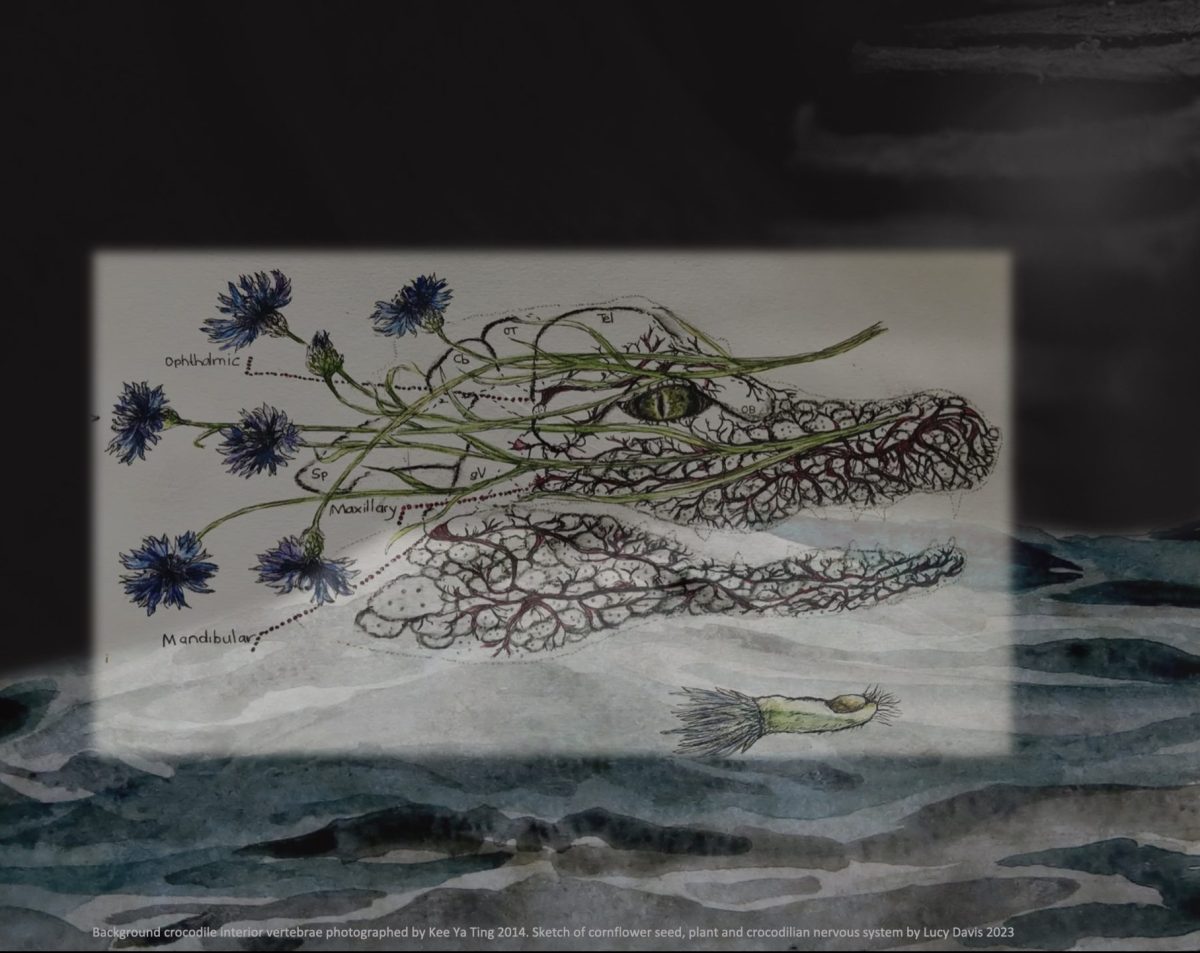
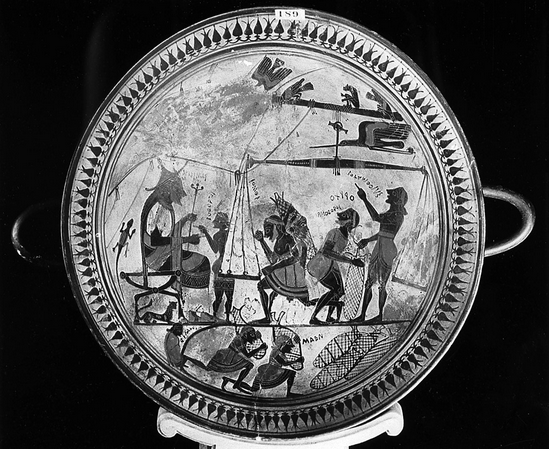
Lucy Davis, Crocodile Seeds
My offering is part of a long process of tracing seeds that were found in the belly of a crocodile, more context can be found here and here.
One story starts with a 4.7m crocodile, killed Singapore in 1888 and offered to the colonial Raffles Museum where they were stuffed with straw. The origin of this straw is still unknown, but inside has been gleaned an ecology of potentially-living seeds, including wheat, rye, and unidentified plants and flowers. Pre-industrial varieties of cereals are of value as possibly more resistant to climate change. Organic farmer Magnus Selenius and his niece Embla Lindblad from Nyby Gård Espoo, Finland specialise in rehabilitating ancient cereals and have agreed to help try to cultivate this “crocodile meadow”.
Another thread of the story concerns the historical figure of Pang Limah Ah Chong, a 19th C. Chinese, Taoist mystic, and tin mine Triad leader during the Perak Larut Wars in Malaya, turned anti colonial freedom fighter. The spirit of Ah Chong, according to a 1948 Singapore Straits Times article found by Lee Kong China Natural History Museum Curator Kate Pocklington, is said to reside in this very same crocodile.
How might incongruous materials and beings, hosted by this colonial trophy, still on display in the museum, seed stories for our troubled times?
Kyriaki Goni, Silphium
Can a story of exhaustion, destruction and greed in the past inspire alternative? Silphium was an uncultivated plant that grew in Cyrene, North Africa (modern Shahhat, Libya) and became the cash crop of the region of Cyrenaica between c. 631 BCE and the 1st century CE when, according to Pliny the Elder, it had become extinct. Its disappearance is considered the first recorded species extinction in history. Modern scholars, believe its extinction was due to overharvesting and overgrazing.
In his Enquiry into Plants Theophrastus born about 370 B.C in Lesbos, emphasizes that silphion avoids cultivated soil: It is typical for this plant, he writes, always to leave [land] which is brought into cultivation and tamed, for it plainly does not miss [human] attendance but is a wild being.
In 2021, researchers from Istanbul University reported that a plant species believed to have been extinct for almost 2,000 years might have been found in Turkey, growing around the slopes of Mt. Hasan in central Anatolia. The species, Ferula drudeana, closely resembles a fabled plant once known as silphium.
-
Correspondence
On 29 Oct 2023, at 14:33, Lucy Davis wrote:
Dear Kiryaki, I have been going through your articles today..
Particularly the account in the ’Frontiers in Conservation Science’ article is absolutely fascinating, so richly detailed and resonant a story… together with this fear of history repeating itself in Turkey today.
I aim to get into the studio tomorrow to respond in text, notes and in sketches.
I hope also also write to the botanist my student Müge Yildiz introduced me to in the region where F drudeana grows..
https://www.livius.org/articles/objects/silphium/
And THANKYOU! This is such an absolutely delightful deviation for me from weeks and weeks of grant writing in the dark.
and then that dream of the Silphium coin too [that I spoke to you about when we talked on zoom…]
More soon..
Lucy
PS We (my partner Philippe and I) have a giant fennel plant f. communalis that has seeded itself in the garden of our barn in Auvergne in France. We have been having small fights over it Philippe (a landscape architect) adores it for its graphic presence and its fragrance.. but I keep trying to cut it back as it takes over the sunlight and soil from everything else.. but now I have more respect for the genus as a whole I may have a different relationship to it.
PPS I love that Silphium resisted cultivation.. the attempts of Turkish botanists to germinate seeds artificially resemble the attempts we are going through now with the crocodile seeds. .. shock exposure to cold to kick start processes.. And then a biodynamic strategy combining of spit and the new moon that I can share next time we chat
PPPS Re the modern met piece I would so love to know what F drudeana smells and tastes like.. can only imagine
PPPS And all the interspecies intercessors, and fellow travellers, both positive and negative
.. the pigeon that collected pollen found in caves assisting contemporary forensic processes,
European demand for wheat adoption pushing out local Cyrenaic barley production..
.. its so very rich!
———————-
From: Davis Lucy
Date: 29. October 2023 at 14.33.04 EET
PS The dream I had was of a thraumatrope — you know the one with the bird in the cage, but which somehow morphed into one of those silphium coins (you showed me), with this wild unruly plant, part silphion part mandrake.. only in the dream the negative space (the environment or context if you like) around the plant seemed to be completely carved away.. dark and empty .. and so I when I awoke, I could not figure out what if anything was actually on the other side of the coin as there would be in a conventional thaumatrope, there was no other context making up a whole picture.
I’ve been trying today to make a rough model of the ‘coin’ in my dream. Cutting away the negative space. The one you see in the video is not properly cut out so you don’t have all the detail but perhaps it gives a sense?
There is something in this negative space perhaps relating to the binaries you mentioned, the medicinal and gendered dimensions of this plant and its properties of at once giving and taking life.
… and of course currency extraction, alienation and colonialism
…and then the way this plant has hypnotised so many.
It always irritated me that the thraumatrope you often see in movies is that of a bird in a cage or a fish in a bowl.
There must be so many more transformative possibilities from such combinations of images
I’m also attaching a video to this mail
———————-
On 30 Oct 2023, at 11:16, Kyriaki Goni wrote:
Dear Lucy,
so good to read that you enjoyed the stories hidden in silphium.
I like the extraction and the negative space in your thaumatrope, nice that you sent a video as well 🙂
Note though that there no ‘r’ it is thauma
Thaumatropes are often seen as important antecedents of motion pictures and in particular of animation. The name translates roughly as “wonder turner”, from Ancient Greek: θαῦμα “wonder” and τρόπος “turn”.
I always love the hidden notions and etymologies in words.
I must say that I have delved into the extremely rich material you have shared with me. I have so many unknown words and I mostly look them up on google.
I feel overwhelmed,and to be honest I am not sure where to pick this up, you and your team have done and still do this deep research which I respect so much.
Can I even add something to this from my studio in Athens, I wonder?
I was thinking of contributing with a semi fictional story, maybe a contemporary shaman communicating with the spirit of the stuffed crocodile? or maybe this is not so fitting with the more scientific approach of the whole project?
or just to put down notes, thoughts, sketches that come up randomly and with no oblivious connection.
I loved the animal tin currency. Look what I found!
I am also in the last few days visiting, in google earth and google street view, these areas.
I am very often travelling this way around the globe, but this time I have all these stories accompanying me. It is so weird.
I liked the spirit ecologies term you mentioned in one of the numerous links you shared with me. Omg there are too many things and results of a years long research,
not sure where to focus. tbh I don’t want to see so much into the seeds themselves, but rather into the stories and connections around them.
I will get back to you.
Regarding meeting, I would suggest maybe a bit later in November?
It is funny, I saw an article about the pawang buaya, the crocodile shaman, they actually are still there today.
One of them was vanished while chanting to crocodiles.
talk soon,
K
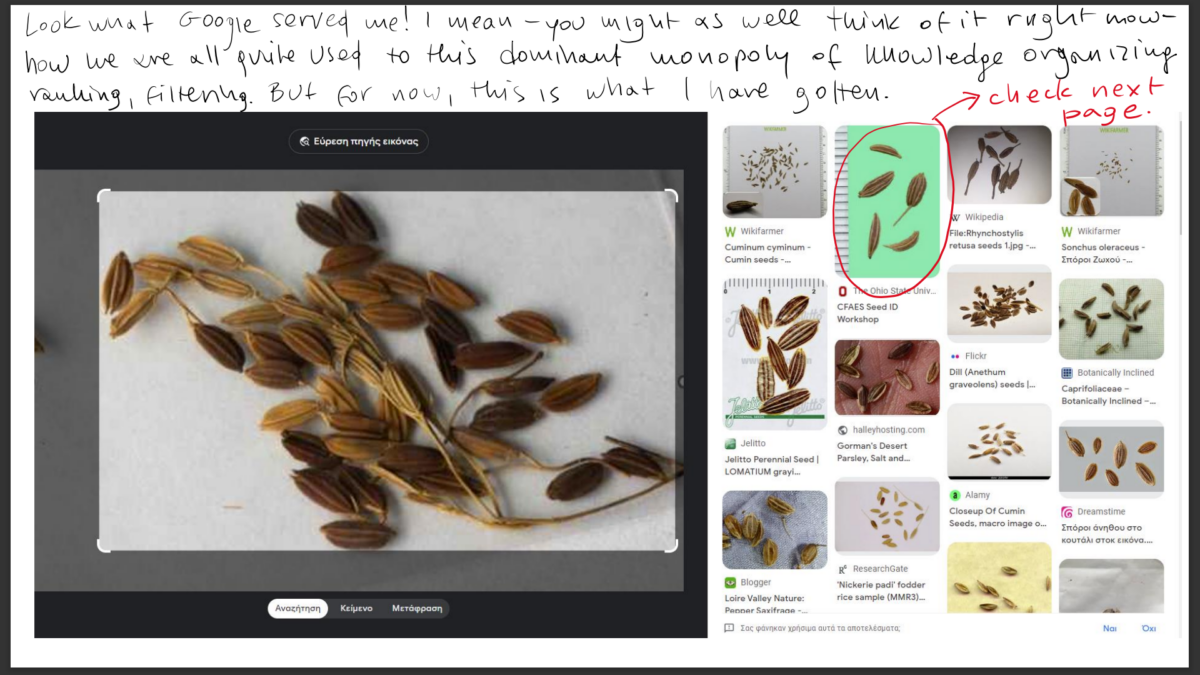
Listening to a seed, to a crocodile, to a warrior, to extractive bodies, to depleted landscapes 1_2023 © Kyriaki Goni.png 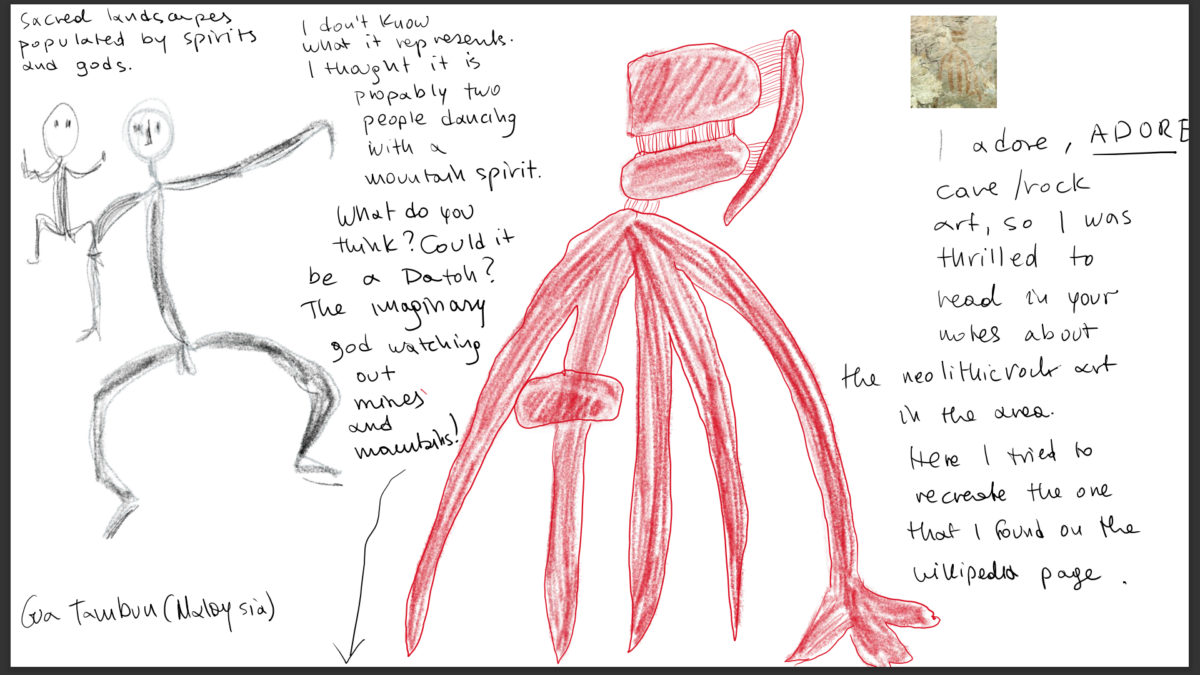
Listening to a seed, to a crocodile, to a warrior, to extractive bodies, to depleted landscapes_2 2023 © Kyriaki Goni.png
———————-On 30 October 2023 at 13.06.20 EET Lucy Davis wrote:
Dear Kyriaki
Ha that slip of the thRauma! very telling. I’m reading about trauma and the body these days.. it must have slipped in there.
Wonder turner.. How sad that the modern imagination seems to repeatedly have birds in cages or fish in bowls, processes of enclosure, capture and containment rather than transformative turns of wonder..
I’m not completely happy with the way the shadow thaumatrope ended yesterday..
I thought to try making one with cutouts from maps of present day Cappadocia and ancient Cyrenaica.. but perhaps that would be too literal and also not really the matter of my dream,
And then I realise in my dream the negative space, the darkness around the plant in the coin was not completely empty but thick with something.
I will also if I have time try and make a version that is the opposite of this with the cut out space being the absent plant rather than the context.. hmm
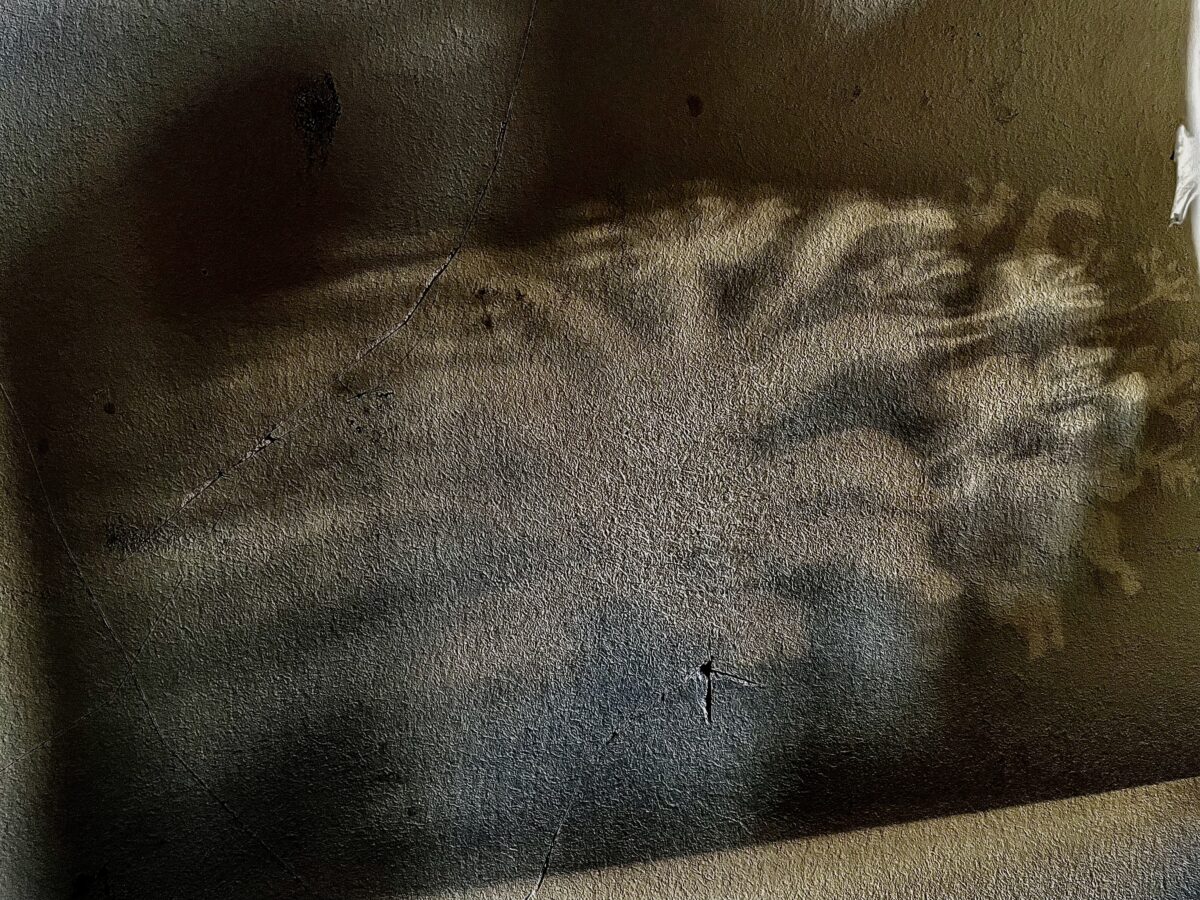
Silphium Traumathrope film still, Lucy Davis, 2023. Photo courtesy of the artist Afternote:
I absolutely love that these coins (and Sylphium) seeds might have inspired the very first historic representation of a heart, that our iconography for a heart is borrowed from a plant.. is an exquisite proposition.Given time I would love to make another thraumatrope with the heart seed from the plant and an anatomical human heart on the other side….
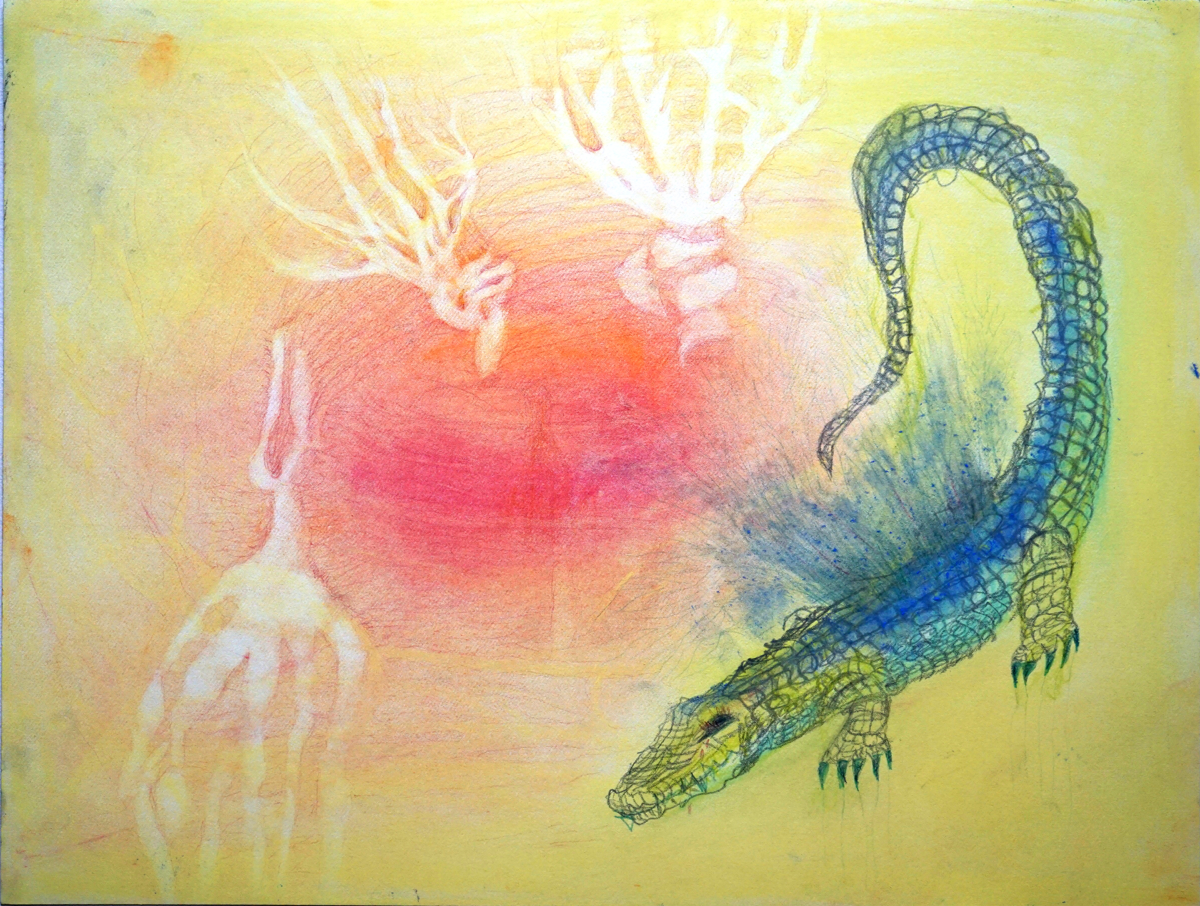
I dreamt of a seed crocodile and datoh spirits 2023 © Kyriaki Goni